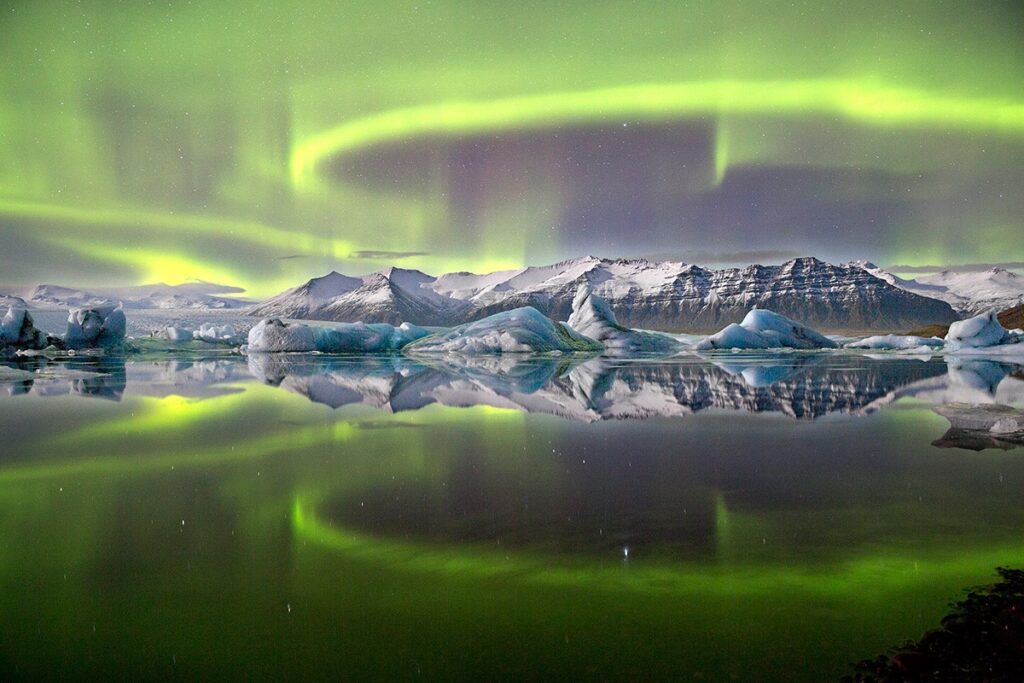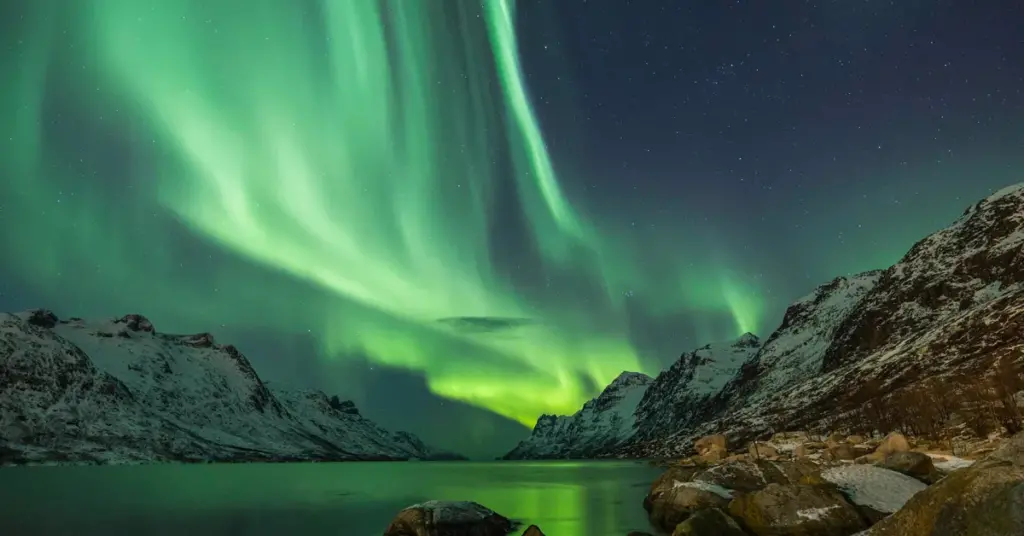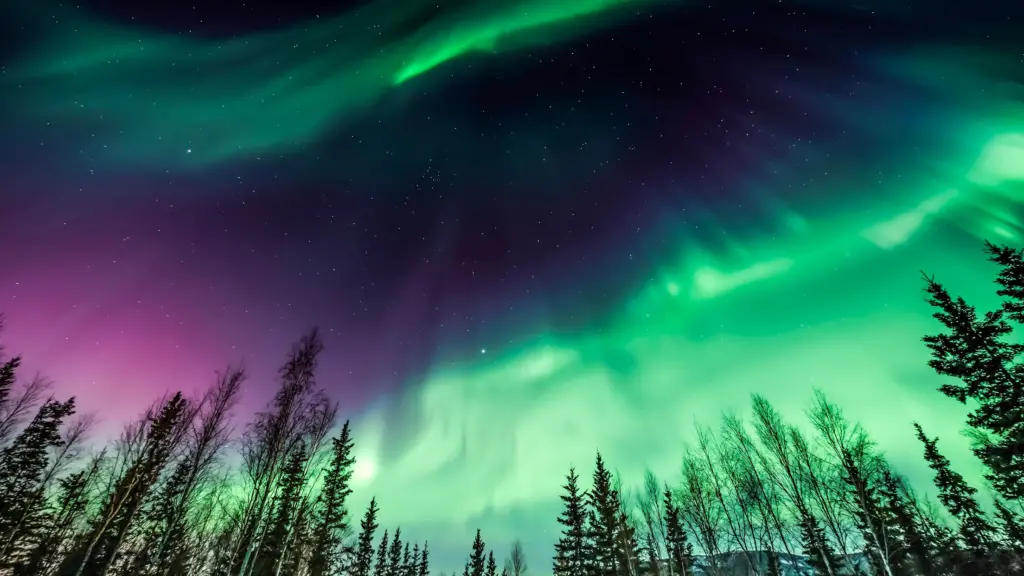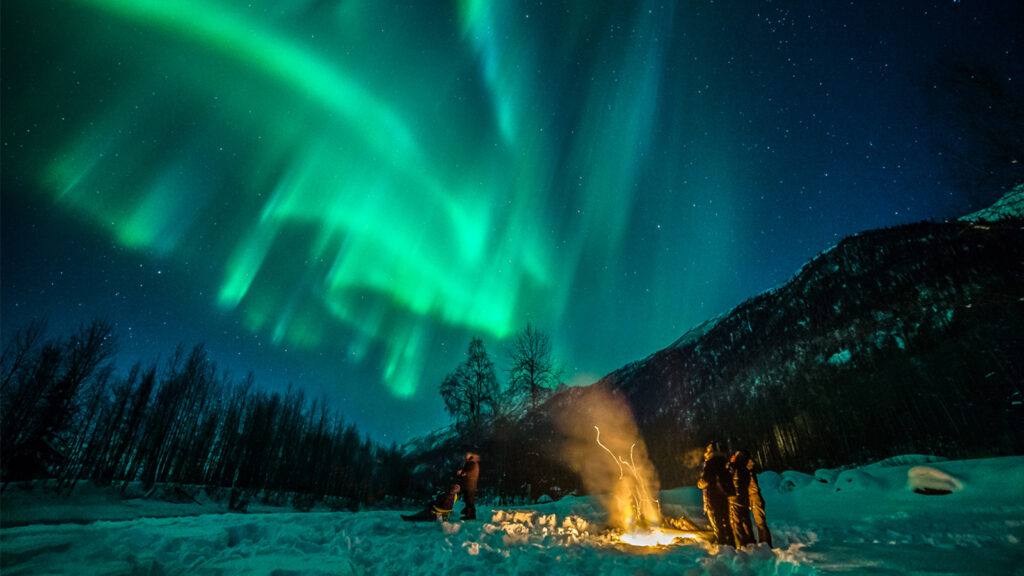Introduction
The ethereal dance of the Northern Lights, or Aurora Borealis, is a captivating natural phenomenon that graces the skies of Alaska. Aspiring aurora chasers often wonder, “When can you see the Northern Lights in Alaska?” In this comprehensive guide, we will unravel the mysteries of the Alaskan night sky, exploring the best times and places to witness the magical display.
Northern Lights Alaska: A Celestial Ballet
Alaska, with its expansive landscapes and proximity to the magnetic North Pole, is a haven for Northern Lights enthusiasts. To make the most of this celestial spectacle, let’s delve into the key factors influencing the visibility of the Northern Lights in Alaska.

Best Time to Visit Alaska for Northern Lights
Seasons Affecting Aurora Visibility
Winter (September – April)
- The winter months offer extended periods of darkness, enhancing the visibility of the Northern Lights.
- Prime time for aurora sightings is from September to April, with peak activity during the coldest months of December to February.
| ℹ️ Read More: | Where Can You See Aurora Borealis in Fairbanks? |
Geomagnetic Activity
Solar Maximum
- The Sun goes through an 11-year solar cycle, and during the solar maximum, which occurs roughly every 11 years, the Northern Lights are more frequent and intense.
- The last solar maximum was in 2014, so aurora activity remains relatively high in the years following.
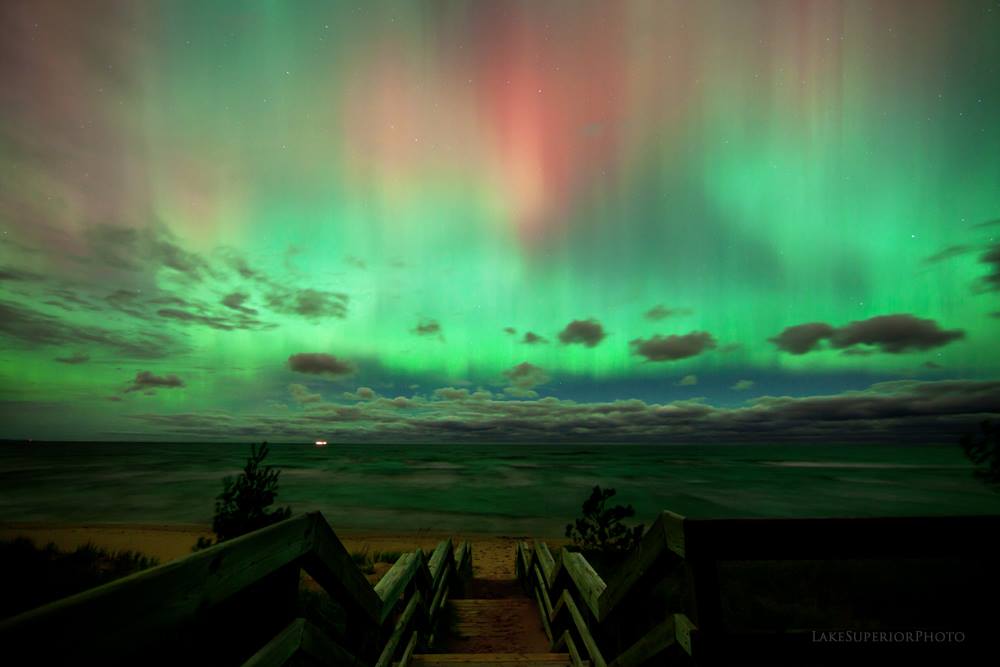
Best Time to See Northern Lights in Alaska
Optimal Viewing Conditions
Dark Skies
- Choose nights with minimal moonlight and avoid full moon phases for the best viewing conditions.
- New moon phases provide the darkest skies, enhancing the visibility of the Northern Lights.
Clear Weather
- Monitor weather conditions to ensure clear skies, as cloud cover can obstruct the view of the auroras.
- Utilize aurora forecast tools and apps for real-time information on geomagnetic activity and cloud cover.
Time of Night
Midnight to 2 AM
- The prime time for Northern Lights visibility is typically between midnight and 2 AM.
- Plan your aurora hunting adventures during these hours for the best chances of witnessing the celestial display.

When Do the Northern Lights Appear in Alaska?
Natural Phenomenon
Auroras Throughout the Year
Contrary to popular belief, the Northern Lights are visible throughout the year, but the winter months provide optimal conditions for observation. Geomagnetic activity can occur at any time, offering sporadic opportunities for aurora sightings.
Late Fall to Early Spring
Late fall to early spring is considered the prime season for observing the Northern Lights in Alaska. Colder temperatures enhance the clarity of the atmosphere, contributing to vibrant and long-lasting auroras.
Best Time of Year to See Northern Lights in Alaska
Planning Your Aurora Adventure
September to April
The best time of the year to see the Northern Lights in Alaska is from September to April. Plan your visit during the winter months to maximize your chances of witnessing this celestial spectacle.
When Are the Northern Lights Visible in Alaska?
Location Matters
Fairbanks vs. Anchorage
Fairbanks, located in the interior of Alaska, offers more frequent and intense Northern Lights displays compared to Anchorage. While Anchorage can provide stunning views, venturing further north increases your chances of a mesmerizing aurora experience.

| ℹ️ View More |
| 🏡 Best Places to Stay in Fairbanks |
Conclusion
Alaska, with its vast wilderness and strategic location, stands as one of the premier destinations for witnessing the Northern Lights. To answer the question, “When can you see the Northern Lights in Alaska?” plan your visit between September and April, keeping in mind the solar cycle, optimal viewing conditions, and the prime time of night. Whether you choose Fairbanks, Anchorage, or other remote locations, the allure of the Northern Lights in Alaska is a celestial spectacle that awaits those who seek the magic of the Arctic skies.
| ℹ️ Read More: | Where Can You See Aurora Borealis in Fairbanks? |
Frequently Asked Questions
When is the best time to visit Alaska for the Northern Lights?
The prime time for aurora sightings in Alaska is from September to April, with peak activity during the coldest months of December to February.
What influences the visibility of the Northern Lights in Alaska?
Factors include the solar cycle (solar maximum enhances activity), dark skies (preferably during new moon phases), and clear weather conditions.
When do the Northern Lights appear in Alaska throughout the year?
While visible year-round, late fall to early spring is the prime season, with colder temperatures enhancing atmospheric clarity for vibrant displays.
Is there a specific time of night that’s best for viewing the Northern Lights?
The prime time is typically between midnight and 2 AM. Plan your aurora adventures during these hours for the best chances of witnessing the celestial display.
Does the location within Alaska matter for Northern Lights visibility?
Yes, the interior regions, particularly Fairbanks, offer more frequent and intense displays compared to cities like Anchorage. Venturing north increases your chances of a mesmerizing aurora experience.

